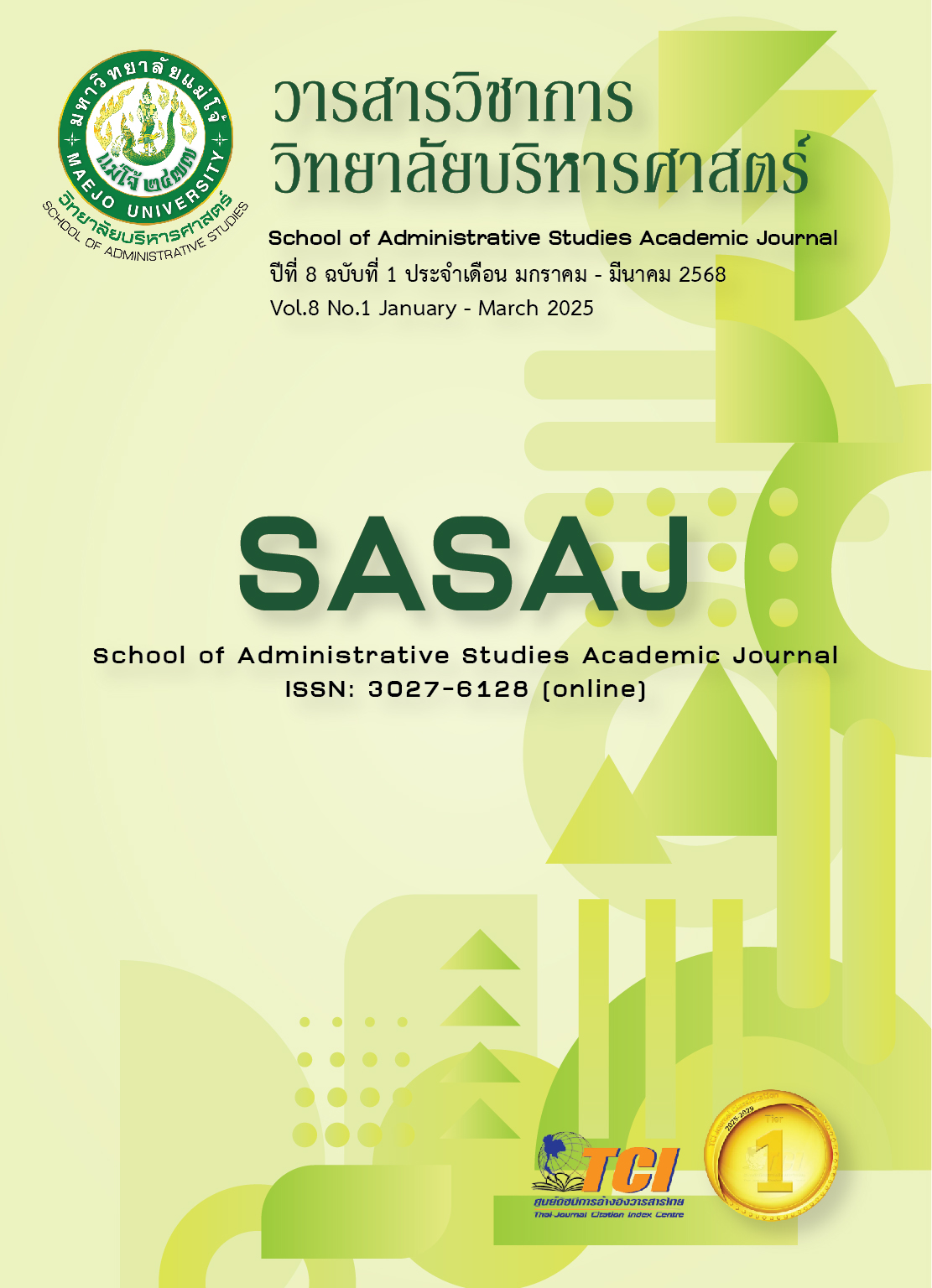Model of Effective Civil Society Group for Peacebuilding in the Southernmost Border Provinces
Main Article Content
Abstract
This research article has three objectives: 1) To study the level of civil society components effective and the efficiency level of peace-building operations in the southernmost border provinces. 2) To study the components of civil society groups that affect the efficiency of peace-building operations in the southernmost border provinces; and 3) To create a model of civil society groups that are effective in peace-building in the southernmost border provinces. The quantitative of conducting research, which is a quantitative research tool used to collect data, is a questionnaire with a sample group of 361 civil society members.
The results of the study demonstrated that 1) The level of civil society components effective was at a high level and the efficiency level of peace-building operations in the southernmost border provinces was at a high level 2) The composition of civil society groups, in general, affects the overall efficiency of peace-building operations in the southernmost border provinces. However, when separating the operations by aspect, the components of civil society groups does not affect all operations. 3) The model of effective civil society groups in peace-building in the southernmost border provinces are as follows: civil society groups must have all the components if they are to be effective in all aspects of peace-building operations in the southernmost border provinces, if some civil society groups need to emphasize the efficiency of peace-building operations in the southern border provinces in not all aspects, there will be different models.
Article Details

This work is licensed under a Creative Commons Attribution-NonCommercial-NoDerivatives 4.0 International License.
ลิขสิทธิ์
References
จิตต์สุมน พรมงคลวัฒน์. (2552). ความสัมพันธ์ระหว่างรูปแบบภาวะผู้นำของผู้บังคับบัญชากับขวัญและกำลังใจของบุคลากร ในสถาบันสังกัดสานักงานคณะกรรมการอาชีวศึกษา จังหวัดอุบลราชธานี (วิทยานิพนธ์ปริญญามหาบัณฑิต). มหาวิทยาลัยราชภัฏอุบลราชธานี, อุบลราชธานี.
พิสิฐ เทพไกรวัล. (2554). การพัฒนารูปแบบเครือข่ายความร่วมมือเพื่อคุณภาพการจัดการศึกษาในโรงเรียน ประถมศึกษาขนาดเล็ก (วิทยานิพนธ์ปริญญาดุษฎีบัณฑิต). มหาวิทยาลัยขอนแก่น, ขอนแก่น.
รุ่งอรุณ กระมุทกาญจน์. (2551). ความต้องการพัฒนาตนเองของบุคลากรสาธารณสุขที่ปฏิบัติงานในศูนย์สุขภาพชุมชนสาธารณสุขเขต 14 (วิทยานิพนธ์ปริญญามหาบัณฑิต). มหาวิทยาลัยราชภัฏอุบลราชธานี, อุบลราชธานี.
ศูนย์เฝ้าระวังสถานการณ์ภาคใต้. (2567). เหตุการณ์ในพื้นที่จังหวัดชายแดนภาคใต้ ประจำเดือน ธันวาคม 2566. สืบค้นจาก https://www.facebook.com/deepsouthwatch/?locale=th_TH.
ศูนย์ศึกษาชาติพันธุ์และการพัฒนา. (2554). รายงานศูนย์ศึกษาชาติพันธ์และการพัฒนา ประจำปี พ.ศ. 2552-2554. เชียงใหม่: มหาวิทยาลัยเชียงใหม่.
สุทธิพงศ์ พรหมไพจิตร, ปุณวัฒน์ อุบล, และ นพปฎล วิเศษสุวรรณภูมิ. (2539). การประเมินผลโครงการทักษิณพัฒนา (รายงานวิจัย). ปัตตานี: มหาวิทยาลัยสงขลานครินทร์.
เอนก เหล่าธรรมทัศน์. (2541). ส่วนรวมที่มิใช่รัฐ: ความหมายของประชาสังคม. วารสารธรรมศาสตร์, 24(2), 124-151.
Aall, P. (2001). What Do NGOs Bring to Peacemaking?. In C. Crocker, F. Hampson, & P. Aall (Eds.), Turbulent Peace, (pp. 365-83). Washington D.C.: United States Institute of Peace Press.
Barnes, C. (2005). Weaving the Web: Civil-Society Roles in Working with Conflict and Building Peace. In P. van Tongeren, M. Hellema, & J. Verhoeven, (Eds.), People Building Peace II: Successful Stories of Civil Society, (pp. 5-28). Boulder CO: Lynne Rienner.
Likert, R. (1932). A technique for the measurement of attitude. Archives of Psychology, 140, 1-55.
Orjuela, C. (2004). Civil Society in Civil War, Peace Work and Identity Politics in Sri Lanka (Doctoral Dissertation). Göteborg University, Göteborg.
Paffenholz, T. (2003). Community-Based Bottom-Up Peacebuilding: The Development of the Life and Peace Institute's Approach to Peacebuilding and Lessons Learned from the Somalia Experience (1990-2000). Uppsala: Life and Peace Institute.
Seedam, I., & Sirisunhirun, S. (2019). A Southern Border Provinces Administrative Center (SBPAC) Organisational Structure Model for Solving Insurgency Problems in the Southern Provinces of Thailand. International Journal of Innovation, Creativity and Change, 10(7), 17-30. Retrieved from https://www.ijicc.net/images/vol10iss7/10710_Seedam_2019_E_R.pdf
Sida. (2005). Sida’s Policy for Civil Society: The Objective of Sida’s Cooperation with Civil Society. Retrieved from www.sida.se
Social Development Department. (2007). Civil society and peacebuilding: Potential, Limitations and Critical Factors. Washington D.C.: The International Bank for Reconstruction and Development / The World Bank.


